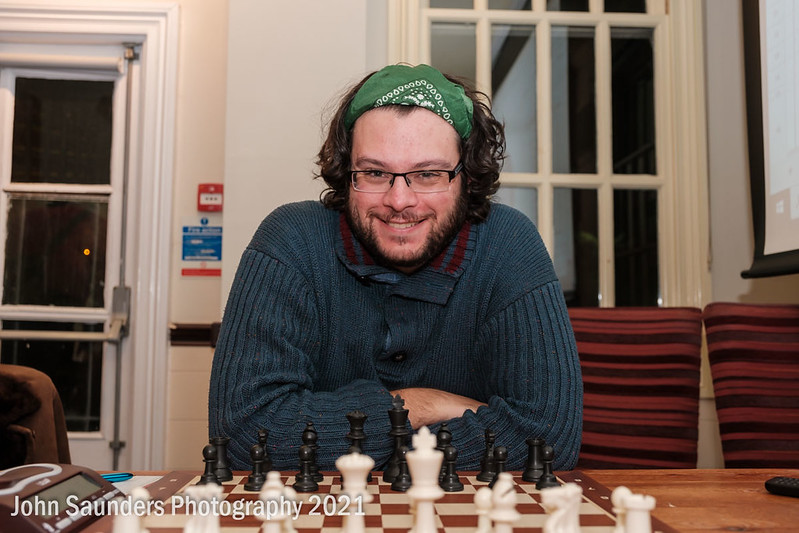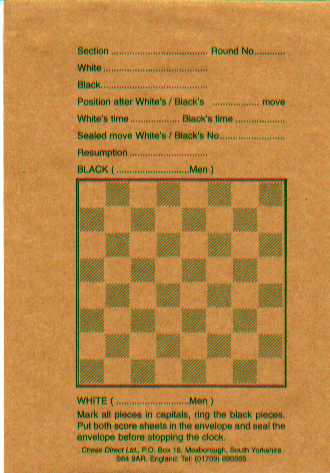Starting with 1. b4 looks like a piece of wilful eccentricity. But over the years strong grandmasters have played it
Michael Healey
Last Monday I gave a lecture at Kingston Chess Club on three Orangutan games I’d played. For those able to attend, I tried to explain the ideas behind the opening, along with some of the issues for both players. The games chosen were all against strong players, using two bishops and ultraviolence. Here are the firework endings:

In this blog post, I hope to expand on the opening itself.
The onomatology of the opening is more diverse than for most chess openings, the names of which are typically based on the players who – or locations which – made them famous. Originally 1. b4 was the Hunt opening, named after a Canadian doctor no one seems to know anything about. Then it became the Hunter-Englisch (Berthold Englisch was a strong Austrian player in the latter part of the 19th century). With the arrival of the hypermodern school, it became the Polish (following its adoption by Savielly Tartakower) and then the Orangutan (supposedly because “the climbing movement of the pawn to b4 and then to b5 is reminiscent of that animal”). Then its stronger, but more risk-averse, little brother “Santasiere’s Folly” (1.Nf3 d5/Nf6 2. b4) was developed, and used by many strong grandmasters (including Viktor Korchnoi and Nigel Davies). Finally 1. b4 became the Sokolsky, named after its most committed adherent, the Ukrainian-Belarusian IM-strength player Alexey Sokolsky, who used it over the board and in correspondence chess to great effect.
I will be calling 1. b4 the Orangutan. Picture an orangutan winged hussar hunting for maple syrup if that helps. [No – Ed.]
There are many big names who have dipped their toe into the Orangutan over the years (Capablanca, Alekhine, Smyslov, Spassky, Fischer), but only a few true believers – Sokolsky, Boris Katalymov and Michael Basman being the main three, each with completely different playing styles (positional, tactical, chaotic). Possibly the Orangutan does not suit the purer chess genius: Capablanca had 0/2 on both sides of b4, and Carlsen maintains a measly 2/4 on the White side.
What are the main characteristics of the Orangutan (other than inducing laughter)?
White’s main aim is to gain queenside space, and if possible exchange wing pawns for more valuable central pawns. It is quite possible to transpose back into more standard positions, especially with Santasiere’s Folly (named after the New York-based chess writer Anthony Santasiere).
Some Black openings (the Grünfeld, Queen’s Indian Defence) do not work that well against the Orangutan. Others (King’s Indian Defence, Dutch) transpose to fairly standard positions. However, there are many, many choices of set-ups for both sides, and a wide variety of unbalanced and unexplored positions can result. If you seek the immortality of your own opening variation, the Orangutan is an excellent place to mine.
One of the main differences between the Orangutan and the vast majority of standard openings is that it forces both sides to think for themselves from early in the game. It is quite possible for even extremely strong players to completely mishandle the opening in the first few moves. Middlegame positions are often “equal”, but slightly easier for White to play.
Early attempts at refutation (c6 and Qb6; a5; d5 and Qd6) don’t seem to work, and often rebound on Black. The most sensible way for Black to play is either to go down the main line “Open Orangutan” (1. b4 e5 2. Bb2 Bxb4) or choose a set-up they are comfortable with from other openings.
Often the opening resembles two boxers circling, with neither army making contact. This early flexible dancing is a major characteristic of the opening. When opposing pawns do eventually meet, the results can be explosive. IM Basman has compared the Orangutan to the St George (1…. a6 2…. b5), the opening of a “counterpuncher”. This is a pertinent observation of Orangutan psychology. Black will take the initiative and the centre, but when White eventually starts hitting back it will certainly hurt. A most unusual way to play with the White bits.
What are the main problems for the Orangutanger?
White’s major headache is development, especially the queenside knight and rook. The Orangutan dark-squared bishop is either stupendous or ghastly, with little in-between. Casual White play leads to good Black positions, so White does need to know what they’re doing. Even if White plays well, the opening will seldom grant any serious advantage. Moreover, the White kingside is often attacked (not to everyone’s taste), to the extent that sometimes queenside castling becomes a valid alternative, despite our first move! And of course White will often forget the b4 pawn is undefended, especially after a couple of pints.
Why should one play the Orangutan?
(a) From a competitive perspective
Your opponent may feel insulted, become annoyed and play badly. Equally they may well underestimate an opening with a silly name they have never faced. Black will often invest time working out a system against this novel opening, which is excellent news for rapid and faster classical games. There are a tremendous number of possible Black set-ups – it is move one after all! As the opening progresses, Black is often caught between playing dynamically and strategically, aggressively and solidly, ending up with something in-between which is neither. White, if they play the opening accurately, should be able to control the pace of the game. Some players react badly to a slower game, or playing on the backfoot with little opportunity for dynamism.
From a “professional” point of view, it is another opening in your arsenal, something else for an opponent to prep against. Black might well read up on a “refutation” or “solution”, but not know that much about the resulting position. It is very easy for Black to “equalise”, but the resulting positions are often incredibly unbalanced (especially the main line), involving unique strategies and even tactical patterns, where the experienced Orangutanger should have the advantage.
I myself use the Orangutan as a weapon against titled players – bringing them to an arena where they should know less than I do (unlike every other opening) – and where it is difficult for Black to play for a win against such insolent weaker opposition. Against weaker players, playing sensible moves, it is difficult for White to avoid draws, while there is often a risk of overpressing. However, White can keep the pieces on and create extremely tense positions, with the battle raging right across the board, which a weaker player will sometimes mishandle.
(b) From the perspective of becoming a stronger chess player
As a chess player, the wider your appreciation of different types of position, the more universal a player you become. The Orangutan is most certainly a challenge, and one that forces you to think and to respond to your opponent from very early in the game. It teaches you to be extremely careful about development, about pawn placement, and about exchanges of both pawns and pieces which will radically alter positions. Rushing too many pawns forward will lead to disaster – the Orangutan often rewards caution, and waiting for the perfect moment to open things up. Certain patterns recur (a weak c6 square, use of an open a-file) which can win games on their own. Positions which seem to be ambling along can suddenly accelerate into dominating White positions:
As an e4 player, it is pleasant to be able to play something completely different from time to time, rather than facing the same openings again and again. I can flex strategic and chaotic neurons which a thousand Ruy Lopezes tend to dull. The Orangutan is most certainly an opportunity for creativity. Here is IM Graeme Buckley v Mike Healey: [N.B. Mike is on the receiving end – Ed.]
Whilst always trying to hack the enemy king if possible, I also get to play set-ups never reached with 1. e4, such as KID and IQP positions. Here is an example:

One valid criticism of my lecture was that the games shown demonstrated not the opening’s strength, but my own. Well, here are four impressive positions reached against extremely strong players using the Orangutan:
Healey v IM Jovanka Houska (+4 after 15 moves)
Healey v GM Chris Ward (+1.2 after 10 moves)
Healey v GM Nick Pert (+2 after 23 moves)
Healey v GM Evgeny Postny (+1.8 after 20 moves)
While we must not take Stockfish’s word for everything, the Orangutan most certainly played its part in getting to these positions; an inept hairless ape brought home 0.5/4 however!
If that was too depressing, some scalps to cheer you up (including the Polish defence with Black):
Slowplay wins v IMs x 4; draw v GM Chris Ward
Rapidplay wins v IMs x 4
Blitz wins v IMs x 4 and against GM Gawain Jones; draws v GMs Marie Sebag and Paul Velten
Not bad for an ageing 2150!


